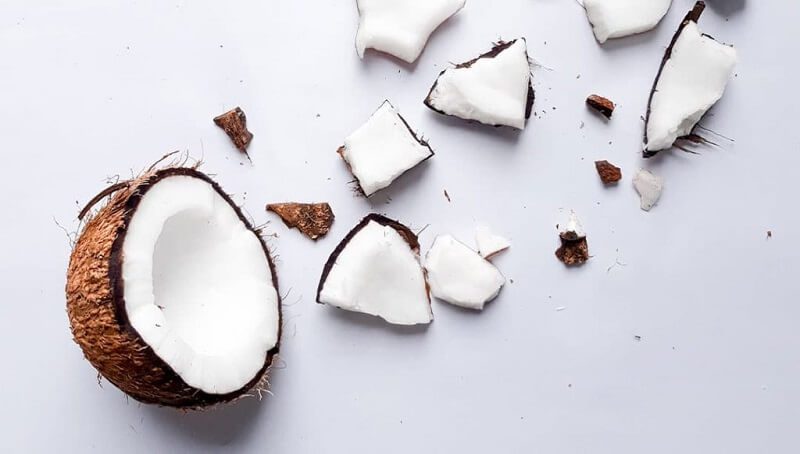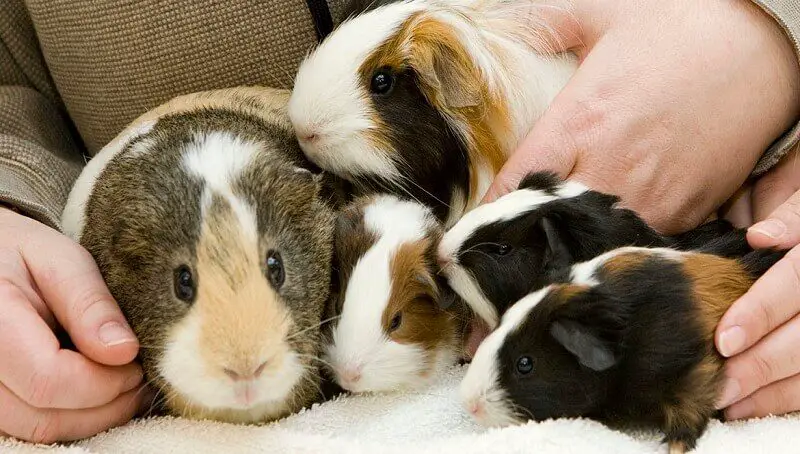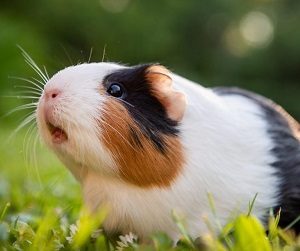
How Much Benadryl Can You Give to Your Dog?
October 17, 2022
Can Dogs Eat Coconut?
October 18, 2022
Guinea pigs through their playful nature are among the best pets in the world. To date, 5 main species are known; Cavia Aperea from Central and South America, Cavia Fulgida from East Brazil, Cavia Nana from Bolivia, Cavia Taschudii from Peru, and Cavia Porcellus (domestically) from South America.
How long do guinea pigs live?
On average, they can live 4-7 years, but in some cases, they can reach 8-10 years if they are carefully cared for, and have a balanced diet. Otherwise, guinea pigs may die at the age of 1-2 years.
This animal is found in the wild but is also kept as a domestic pet. In its natural environment as a wild animal, lives in small groups of about 5-10 specimens, in galleries and burrows dug or left by other small animals. At maturity, it can have a body length of 25-30 cm and a weight of 0,5-0,9 kg.
In its natural environment, the guinea pig ceases to reproduce unless it has favorable conditions. In captivity, however, a female can reproduce throughout the whole year. Up to 16 months a young specimen is constantly growing, so based on body weight, the age of the animal can also be determined.
The Impact of Diet and Nutrition
Although they are called guinea pigs, these cute rodents are far from the relaxed nutrition style of the pig, with which they do not have much in common.
You might also like my articles on the lifespan of gerbils, mini lops, or teddy bear hamsters.
The most important element in the diet of a guinea pig is vitamin C. Just like humans, they are not able to synthesize vitamin C themselves, so they need a rich diet.
The guinea pig is a rodent, which means that its incisors are constantly growing and it is constantly eating. And if there is something that should not be missing from its cage, this is good quality hay.
Besides the hay, there must always be fresh water and special food for guinea pigs in the cage. In addition, you can offer them pieces of vegetables and fruits like salad, kale, zucchini or carrots, papaya, banana, mango, occasionally raisins, and alfalfa.
Any fresh food that has remained in the bowl 4 hours after administration should be discarded to prevent illness.
Aging Process
- At birth, the male has 45-104 g and the female has 45-98 g.
- At 2 weeks the male has 0,134 kg and the female 0,131 kg.
- At 1,5 months the male has 0,258 kg and the female 0,259 kg.
- At 3 months the male has 0,411 kg and the female 0,400 kg.
- At 4 months and 2 weeks, the male has 0,596 kg and the female has 0,564 kg.
- At 7 months and 2 weeks, the male has 0,723 kg and the female has 0,687 kg.
- At 10 months and 2 weeks, the male has 0,765 kg and the female has 0,873 kg.
- At 3 years and 2 months, the male has 1,100 kg and the female has 0,900 kg.
From an early age, the gender of the guinea pig can also be determined. In the female, the vaginal opening has an elongated and triangular shape and is visible by slight lateral pressure. The distance between the anus and the vaginal opening is small. The male genital opening is round, following lateral pressure the weenie appears in the form of a Y.
The male and female reach reproductory maturity at 2 months of age, and mating is recommended to take place only after 6 months of age.
With proper care and proper nutrition, guinea pigs can live longer and thus become your home friends for a longer period of time.
Health of Guinea pigs
 The guinea pig is very fragile from a cardiac point of view. Avoid taking him into your arms suddenly or making too loud noises. If it is not fed properly or suffers from a hereditary problem, its teeth will grow too much and it will not be able to eat. It is sensitive to vitamin C deficiency. The guinea pig may suffer from cystitis or pneumonia.
The guinea pig is very fragile from a cardiac point of view. Avoid taking him into your arms suddenly or making too loud noises. If it is not fed properly or suffers from a hereditary problem, its teeth will grow too much and it will not be able to eat. It is sensitive to vitamin C deficiency. The guinea pig may suffer from cystitis or pneumonia.
Guinea pigs feel pain just like any mammal, even humans. They usually don’t look like they’re hurt or suffering, so it may take a long time before you realize it. It is a sign of illness if they change their behavior or feed, are quieter, or stay hidden most of the time. Guinea pigs are vulnerable to infections and other diseases, especially dental ones.
The guinea pig has unique leukocytes. White blood cells are unique and are called Kurloff cells. That’s why we won’t see any tumors in the guinea pig.
The guinea pig is not the ideal pet for a very young child. It’s a fragile and very sensitive animal. Unlike other rodents, it cannot defend itself, which makes it very vulnerable.
Surely the guinea pig is the ideal pet for people who are very attentive to its needs and who take the time to learn what its numerous peculiarities are.
Proper living conditions
Guinea pigs are sensitive to temperature changes and it is best not to expose them to extreme temperatures. Temperatures above 26 degrees Celsius cause them strokes, and those below 15 degrees Celsius cause them colds.
It is advisable to provide the guinea pig with a safe area, large enough to move and tall enough to stand completely on two legs. I also recommend that the area where the guinea pig lives is well-ventilated, dry, and without obstacles. Tunnels and shelters will encourage it to move. And if your guinea pig has disappeared for a while, it may be a good idea to look at the pipes as well. If you host it in your home, keep it away from heat sources like radiators, and windows where the sun hits directly.
Prepare the guinea pig with a warm bed of hay, especially as it can eat it. Softwood products can make your guinea pig sick. Provide them with untreated wooden toys that they can bite or willow sticks. Clean the shelter daily and make sure it is dry.
Guinea pigs like routine and can easily become stressed if they are housed in a house with lots of activity and noise. If a guinea pig is bored and has nothing to do, it is possible that it will suffer.
Before I finish, I want to remind you that although it is a rodent, the guinea pig is an animal that needs a lot of attention and loves to have company.
